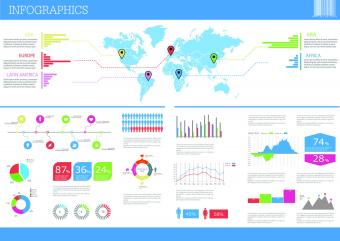Immigrant Profiles & Demographics
Recent Activity

This conversation, featuring a former U.S. Census Bureau director and other top experts, examines how the many challenges facing the 2020 Census could affect the count and representation of immigrant communities, the difficulties inherent in data matching to determine legal status, and the legal and constitutional issues surrounding the administration’s actions.

This webinar highlights findings from an MPI report examining the potential impacts of expected changes to the public charge rule by the Trump administration. Leaked draft versions suggest the rule could sharply expand the number of legally present noncitizens facing difficulty getting a green card or extending a visa as a result of their family's use of public benefits. The rule likely would discourage millions from accessing health, nutrition, and social services for which they or their U.S.-citizen dependents are eligible.
Where can you find the most accurate statistics on some of the top immigration issues—ranging from the size of immigrant and emigrant populations, to humanitarian and labor flows, naturalization rates, enforcement statistics, remittances, and more?

With immigration increasingly visible in the news and the political space in the United States and internationally, getting access to accurate, high-quality data is essential to understand immigration’s demographic effects and impacts on the economy, education and labor systems, and communities. This event marks the release of the Immigration Data Matters guide.

This webinar offers a discussion of the economic, linguistic and educational disadvantage experienced by U.S. children with unauthorized immigrant parents. The MPI researchers discuss their finding that 86 percent of the 5.1 million such children in the United States have a parent who could potentially benefit from the Deferred Action for Parents of Americans and Lawful Permanent Residents (DAPA) program.




















Shifting Patterns and Policies Reshape Migration to U.S.-Mexico Border in Major Ways in 2023
A Shrinking Number of DACA Participants Face Yet Another Adverse Court Ruling
A Turning Point for the Unauthorized Immigrant Population in the United States
A Deeper Look at the DREAMers Who Could Feature in the Legalization Debate in Congress
Nearly 3 Million U.S. Citizens and Legal Immigrants Initially Excluded under the CARES Act Are Covered under the December 2020 COVID-19 Stimulus
Anticipated “Chilling Effects” of the Public-Charge Rule Are Real: Census Data Reflect Steep Decline in Benefits Use by Immigrant Families
As U.S. Health-Care System Buckles under Pandemic, Immigrant & Refugee Professionals Could Represent a Critical Resource
Millions Will Feel Chilling Effects of U.S. Public-Charge Rule That Is Also Likely to Reshape Legal Immigration
More Than a DREAM (Act), Less Than a Promise
People Leave Footprints: Millions More Unauthorized Immigrants Cannot Be ‘Hidden’ in Data Estimates
Pages